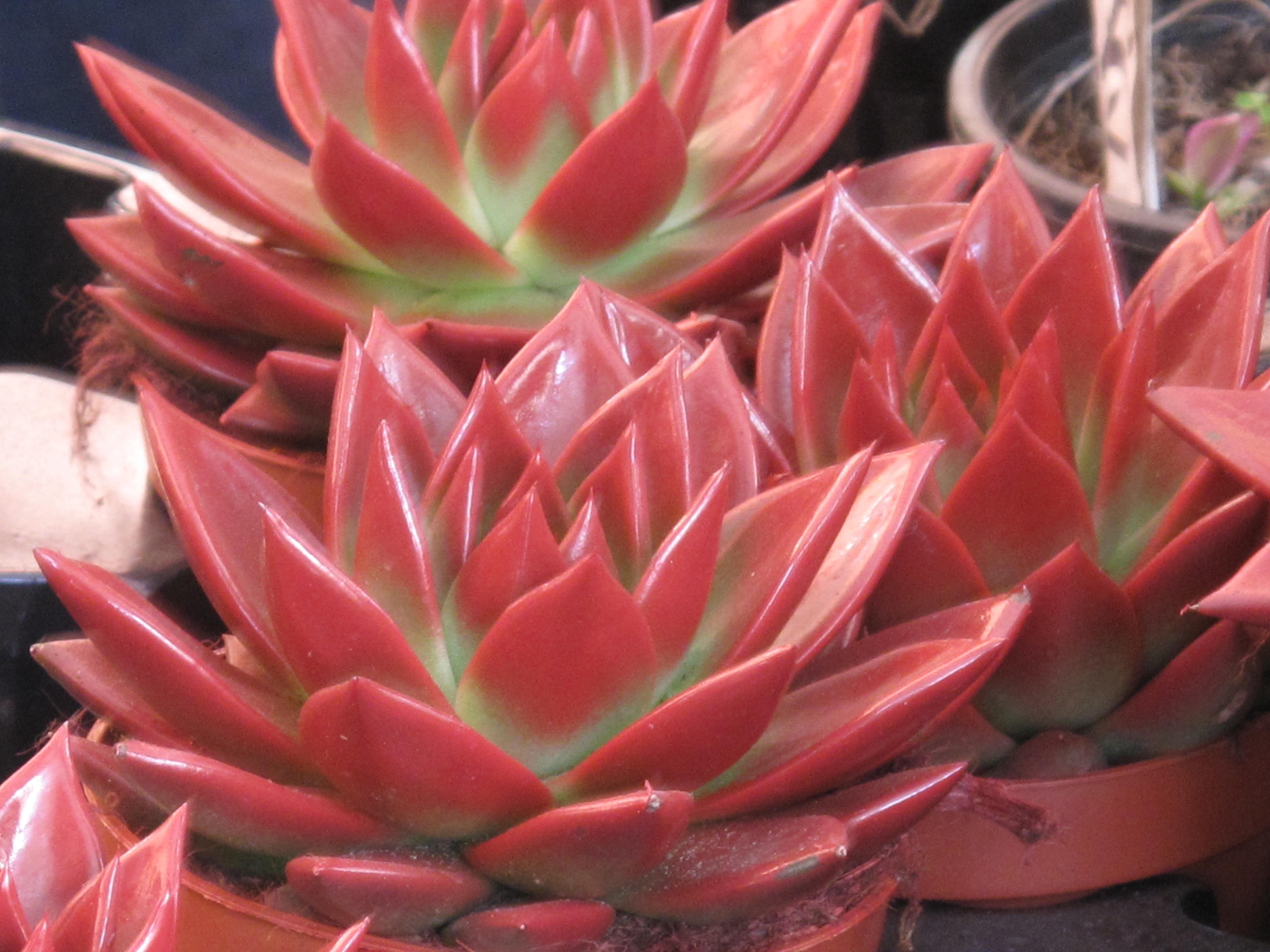Echeveria Agavoides
This variegated echeveria would look beautiful in nearly any water wise garden. The striking color of the leaves immediately grabs visual interest.
Echeveria Agavoides Plants, Books and More at Amazon.com

“Echeveria agavoides (red)” by Tangopaso – Own work. Licensed under Public Domain via Wikimedia Commons.
Echeveria agavoides is a species of flowering plant in the Crassulaceae family, native to rocky areas of Mexico, notably the states of San Luis Potosí, Hidalgo, Guanajuato and Durango.
E. agavoides is a small, succulent stemless plant, 8–12 cm (3–5 in) tall, with a rosette of leaves 7–15 cm (3–6 in) in diameter. It is often solitary, but old plants in good condition grow offsets. The leaves are green, triangular, thicker (6 mm) and more acute than the other echeverias – hence the explanation of their name agavoides, “looking like an agave”. Some varieties with bright light have reddish (or bronze) tips and some forms have slightly red to very red margins. The inflorescences in summer appear on slender, single-sided cymes up to 50 cm (20 in) long. The flowers are pink, orange or red, the petals tipped with dark yellow.[1]
As with most echeverias, E. agavoides fears moisture and prefers mineral soils, growing best in light and even direct sunshine, which aids flowering. In order to flower, plants need rest in the winter, without water and in a cold place – but not less than 5 °C (41 °F). In temperate regions they must be kept indoors during winter, but may be placed outside during the summer months.[1]
This plant has gained the Royal Horticultural Society‘s Award of Garden Merit.[3]
Many hybrids have been created to obtain more brightly colored flowers or leaves.
The easiest methods of propagation are leaf cuttings and division of older plants. — Wikipedia
- Echeveria Agavoides at Wikipedia
- Echeveria Agavoides at Pacific Horticulture
- Echeveria Agavoides at San Marcos Growers
- Echeveria Agavoides Plants, Books and More at Amazon.com
Previously in the Interesting Plant series:
- Jerusalem Sage (Phlomis fruticosa)
- Hummingbird Sage (Salvia spathacea)
- Seaside Daisy, Beach Aster (Erigeron glaucus)
- Toyon (Heteromeles arbutifolia)
- California Lilac (Ceanothus)
- Bigberry Manzanita (Arctostaphylos glauca)
- Douglas Iris (Iris douglasiana)
- Malva Rosa (Lavatera assurgentiflora)
- Baby Blue-Eyes (Nemophila)
- Coral Bells or Alum Root (Heuchera)
- Deer Grass (Muhlenbergia rigens)
- Echeveria ‘Lola’
- View all past “Interesting Plant” posts
Interesting Plant is a series from A Gardener’s Notebook blog and podcast that highlights the most interesting plants I find in my Internet and real-world travels — Douglas




